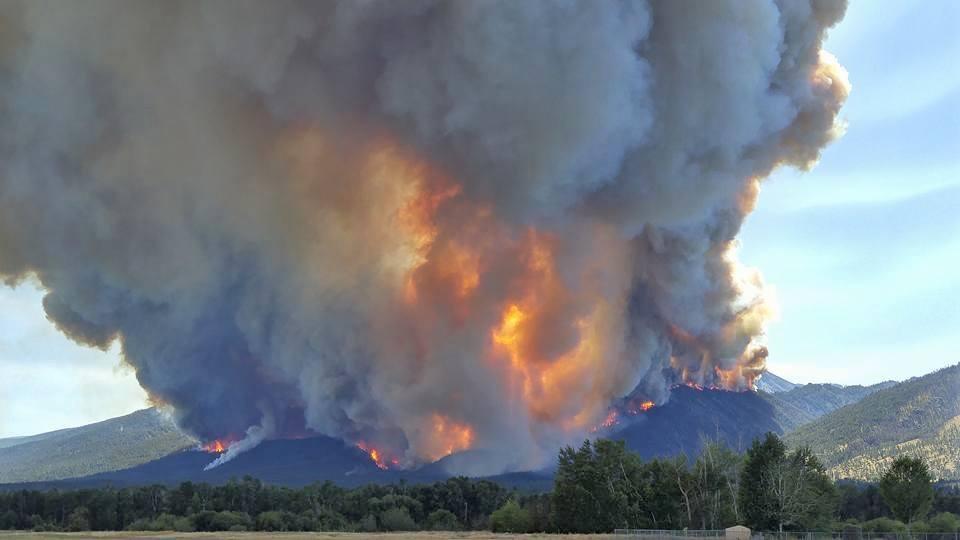13 June 2023

AGU’s “Fire in the Earth System” collection offers more than 100 cutting-edge research papers on every aspect of fire. Shown here: the 2016 Roaring Lion Fire in Montana. Credit: U.S. Forest Service
AGU press contact:
Liza Lester, [email protected], +1 (202) 777-7492 (UTC-4 hours)
WASHINGTON — As climate change increases the spread and behavior of wildfires in many parts of the globe, fully understanding the many roles of fire on Earth grows more and more urgent. AGU has published an interdisciplinary special collection of more than 100 papers on fire, covering interactions with climate change, impacts on humans and our world, public health implications and other research in this extremely active field.
The “Fire in the Earth System” special collection is unique in focusing not on a specific aspect of research but on the full array of fire’s impacts on people and our world and the diverse research areas that are currently being pursued, all on a single website. Published in ten AGU subject-area journals, the papers are written by a virtual who’s who of global fire scientists. The collection comprises papers from both hybrid and open access journals. All non-open access papers are freely accessible until August 15.
“The collection is almost like a clearinghouse for a huge variety of high-quality new research,” said Amy East, a geologist at the U.S. Geological Survey and the convening editor of the special collection. “Just to skim down the collection’s web page gives you a sense of the tremendous extent of impacts wildfires have on communities and the different fields of research.”
However a reader might define “diverse,” the special collection fits the term. Every continent is studied, including Antarctica, as are the atmosphere and oceans. Some papers present case studies of individual fires; others delve into broad regional or global impacts. Researchers employ ground, airborne and satellite observations that provide insights into what happened from last year to 22,000 years ago. Chemistry, physics, meteorology, oceanography and solid Earth processes are all represented.
Human impacts such as public health and damage to air and water quality are also surveyed. Perhaps the largest single topic is the consequences of a warming and drying climate in Earth’s fire-prone regions, such as Australia, the Mediterranean and the U.S. West. Some papers report new methods and technologies to measure and understand fire behavior.
A small sampling of results illustrates the interdisciplinary nature of the work:
- A study of Australia’s megafires in 2019-2020 found that wildfire emissions pushed tropical clouds and thunderstorms northward toward the equator, in much the same way that a major volcanic eruption in the Southern Hemisphere would. The finding suggests that southern wildfires could affect global weather by influencing the occurrence of El Niño and La Niña events.
- In the United States, most large fires occur in the West, but the harm they cause doesn’t stay there. Researchers found that since 2006, about three-quarters of both hospital admissions and deaths from exposure to wildfire smoke occurred in the eastern U.S. A different study showed a significant correlation between the arrival of wildfire smoke and emergency-room and other hospital admissions five days later.
- After a wildfire, even normal rainfall can cause flooding and debris flows in burned areas. Researchers found that in Southern California, emergency managers should expect highly destructive post-fire debris flows every 10 to 13 years — about as often as the region gets a magnitude 6.7 or greater earthquake.
- Climate change is expected to make Asian monsoons stronger, but will the extra moisture suppress wildfires or increase them by growing more plants to fuel bigger fires? Scientists examined 14,800 years of mud from the bottom of a Chinese lake to conclude that in eras when China had heavier monsoons, wildfires increased.
East pointed out that many scientific journals regularly publish excellent wildfire studies. However, for those who would want to understand the full range of cutting-edge research or a sense of the directions, depth and breadth of today’s wildfire studies, she said, “The special collection is a great place to start.”
#
AGU (www.agu.org) is a global community supporting more than half a million advocates and professionals in Earth and space sciences. Through broad and inclusive partnerships, AGU aims to advance discovery and solution science that accelerate knowledge and create solutions that are ethical, unbiased and respectful of communities and their values. Our programs include serving as a scholarly publisher, convening virtual and in-person events and providing career support. We live our values in everything we do, such as our net zero energy renovated building in Washington, D.C., and our Ethics and Equity Center, which fosters a diverse and inclusive geoscience community to ensure responsible conduct.
Notes for journalists:
An introduction to the special collection is available here.
The full collection website is openly accessible here.